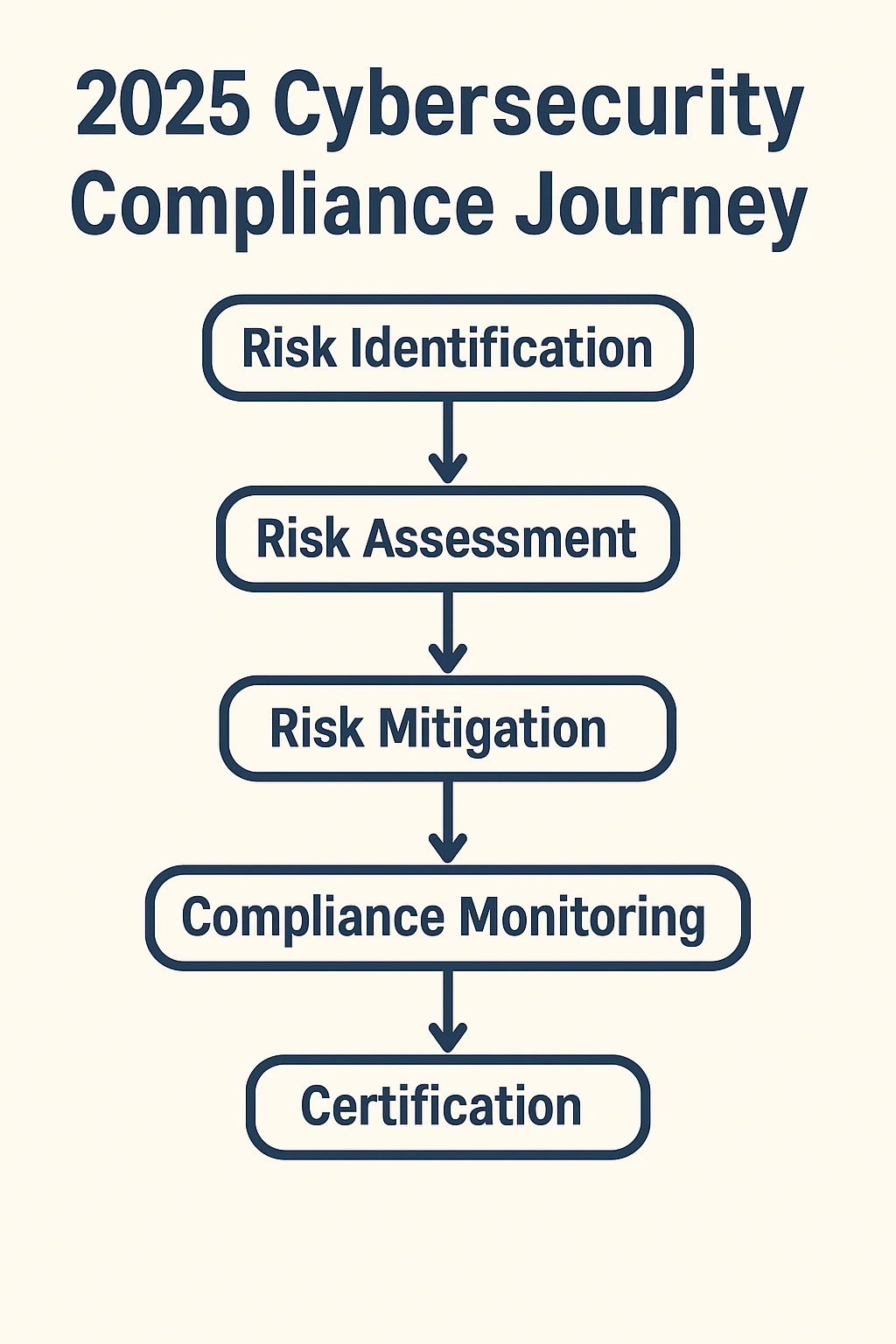Introduction
In today’s rapidly evolving threat landscape, regulatory expectations are growing stricter worldwide. If your organization is not prepared for the cybersecurity compliance checklist 2025, you risk hefty penalties, reputational damage, and data breaches. This article offers a detailed, step-by-step compliance checklist to guide CISOs, IT compliance officers, and business leaders through the new cybersecurity era.
Why Cybersecurity Compliance Matters More Than Ever in 2025
The stakes have never been higher:
- Cyberattacks in India rose by 23% in 2024.
- New regulations like the Indian Digital Personal Data Protection Act (DPDP 2023) require full implementation by 2025.
- Global standards (e.g., GDPR compliance 2025, NIST cybersecurity framework 2025) are aligning with stricter mandates.
In 2025, compliance is not just about avoiding fines—it’s about safeguarding business continuity and customer trust.

Cybersecurity Compliance Checklist for 2025
1. Conduct a Comprehensive Cybersecurity Risk Assessment
- Identify and classify sensitive data.
- Evaluate existing security controls.
- Map risks against regulatory requirements.
2. Update and Align Security Policies
- Update policies to comply with GDPR, DPDP, HIPAA, and other applicable regulations.
- Incorporate specific 2025 regulatory changes.
3. Implement Post-Quantum Cryptography Readiness
- Future-proof your encryption.
- Align with NIST recommendations for quantum-safe algorithms.
4. Strengthen Access Management and Authentication
- Enforce Multi-Factor Authentication (MFA).
- Implement Zero Trust architecture principles.
5. Enhance Data Privacy Measures
- Ensure robust consent management systems.
- Enable easy user data access, portability, and erasure.
- Implement data minimization strategies.
6. Incident Response Planning and Testing
- Develop an updated Incident Response Plan (IRP).
- Conduct tabletop exercises and real-world drills.
7. Regular Security Awareness Training
- Conduct periodic cybersecurity training for employees.
- Special focus on phishing, ransomware, and insider threats.
8. Maintain Audit Trails and Logging
- Collect, protect, and analyze logs for regulatory audits.
- Implement automated monitoring and alerting systems.
9. Engage in Third-Party Risk Management
- Assess vendor compliance.
- Implement data-sharing agreements and cybersecurity standards.
10. Obtain Cybersecurity Insurance
- Evaluate cybersecurity insurance aligned with compliance obligations.

Major Cybersecurity Regulations Impacting India in 2025
Indian Digital Personal Data Protection Act (DPDP)
- Applies to all entities processing personal data of Indian citizens.
- Focuses on consent, data minimization, purpose limitation, and data breach notifications.
IT Act Amendments (India)
- Stricter cybersecurity obligations for intermediaries.
- Heavy penalties for non-compliance.
GDPR (Global Impact)
- Extra-territorial application for Indian businesses handling EU citizens’ data.
- Requirements include Data Protection Officers (DPOs), impact assessments, and breach reporting.
NIST Cybersecurity Framework 2025
- Revised guidelines for Identify-Protect-Detect-Respond-Recover lifecycle.
- Encourages Zero Trust principles and cyber resilience.
Common Compliance Challenges for Indian Organizations
- Lack of updated IT infrastructure.
- Limited cybersecurity skillsets.
- Complex vendor ecosystems.
- Insufficient leadership commitment.
- Delayed incident response mechanisms.
Proactive planning can turn these challenges into competitive advantages.
Pro Tips for Achieving Cybersecurity Compliance in 2025
- Start Early: Don’t wait for enforcement deadlines.
- Prioritize High-Risk Areas: Focus on crown jewel data and critical systems.
- Work with Experts: Partner with legal, cybersecurity, and compliance specialists.
- Document Everything: Meticulous documentation aids in audits and breach investigations.
- Continuous Improvement: Treat compliance as an ongoing journey, not a one-time project.
FAQ Section
Q1: What is included in a cybersecurity compliance checklist for 2025?
A: It includes risk assessments, policy updates, encryption upgrades, data privacy measures, incident response plans, staff training, audit readiness, and third-party risk management.
Q2: How can businesses ensure cybersecurity compliance in 2025?
A: Businesses should perform gap analyses, align policies with new laws, adopt frameworks like NIST CSF, conduct regular audits, and maintain ongoing employee training programs.
Q3: What are the main cybersecurity regulations affecting India in 2025?
A: Key regulations include the Digital Personal Data Protection Act (DPDP), updated IT Act provisions, and international standards like GDPR.
Q4: Why is post-quantum cryptography important for compliance?
A: Because quantum computing could render traditional encryption vulnerable, post-quantum algorithms future-proof data protection, a critical compliance requirement.
Q5: What industries are most affected by cybersecurity regulations in 2025?
A: Healthcare, finance, IT services, telecommunications, and e-commerce are among the most regulated sectors.
Conclusion
Meeting cybersecurity compliance 2025 standards is not optional—it’s essential for business survival and growth. Indian organizations, in particular, must navigate a complex web of new regulations, technological shifts, and rising threats.
Ensure your organization meets 2025 cybersecurity standards—download your ultimate compliance checklist and stay secure and compliant!




